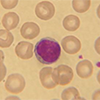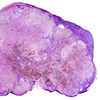Management of the Menopause
The menopausal transition is best diagnosed on clinical grounds. Endocrine investigation may be helpful where the pattern of age, menstrual history and features of oestrogen deficiency are unusual.
Please indicate the woman’s date of birth, recent menstrual pattern and date of last menstrual period/day of cycle on which the blood sample was collected. A rise in follicle stimulating hormone (FSH) is the earliest sign of the approaching menopause. Measurement of serum FSH is the recommended first investigation if biochemical confirmation is necessary. The measurement of luteinising hormone (LH), oestradiol or progesterone is not appropriate. A serum FSH in the reference range for the follicular phase does not exclude the perimenopause.
Hormone Replacement Therapy
HRT when prescribed (orally or transdermally) for the relief of menopausal symptoms does not require endocrine monitoring. Where there is unexpected failure of treatment, for example due to non-compliance or malabsorption, investigation may be useful. Different formulations of HRT may or may not be detected by oestradiol assays. Please indicate on the request form the HRT preparation prescribed.
The main indication for measuring oestradiol in women on HRT is in those receiving implants containing oestradiol. Early replacement of the implant may result in accumulation of oestradiol. Monitoring of serum oestradiol before the implant is replaced has been recommended to avoid supraphysiological concentrations. Sometimes testosterone implants are used in HRT. Measurement of testosterone in an analogous fashion to oestradiol may help to assess whether a further implant may be necessary.
UHB, Clinical Chemistry, Clinical
- Created on .
- Last updated on .
- Hits: 4896







